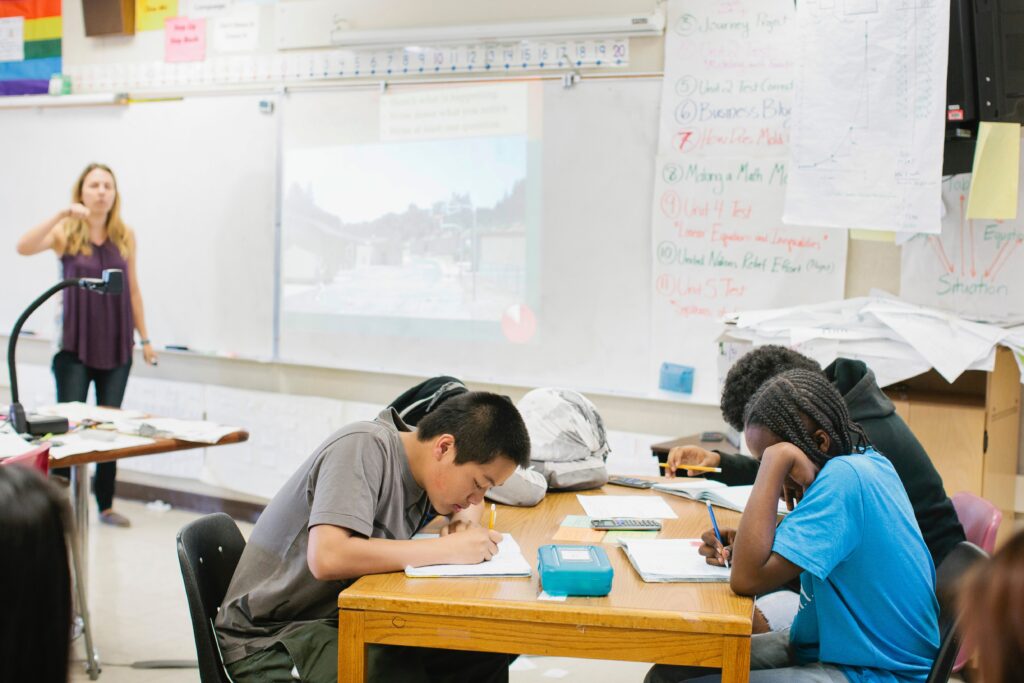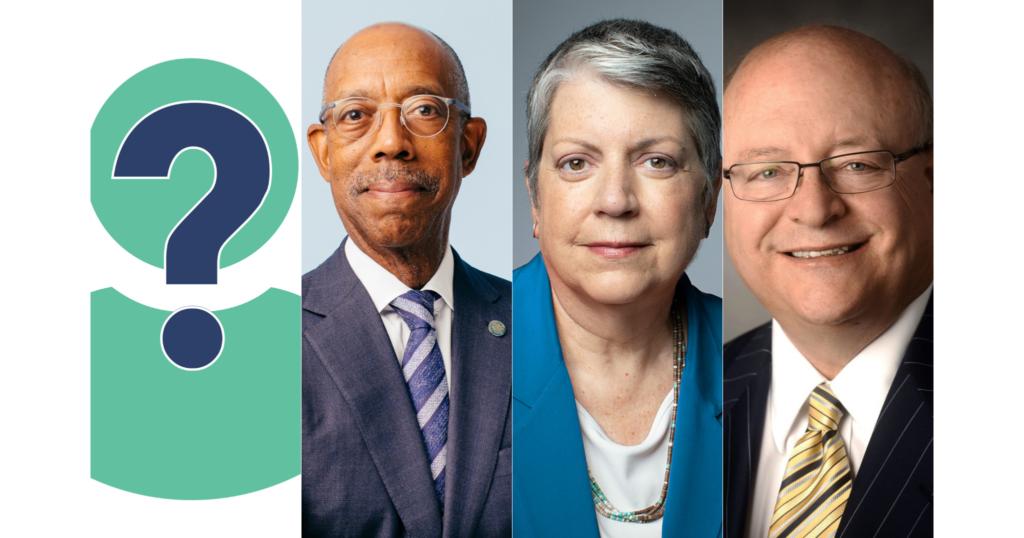
A student heads toward the Student Services building at Los Angeles Pierce College
Credit: Delilah Brumer/EdSource
Waiting for college financial aid offers has been worrying for Kamila Juarez, a high school senior at Grace Davis High School in Modesto. The prolonged timeline of this process, caused by a delayed release of this year’s Free Application for Federal Student Aid, or FAFSA, has added to the uncertainty.
“It’s kind of stressful, just because I know that when I do know how much I get, it’s going to be pretty fast,” Juarez said. “So knowing that I have all this waiting time, I can’t really do much about it besides apply for scholarships and wait to hear back from those scholarships. It’s pretty suspenseful.”
The U.S. Department of Education launched a renewed version of FAFSA on Dec. 31, 2023 — three months later than the usual release each Oct. 1 — because the new form was not ready to be rolled out on time. The new FAFSA was said to be simpler and more efficient for families to complete, with the intention of providing more students with aid due to a new formula.
With FAFSA’s availability issues, about 5.7 million students have successfully completed the application, compared to the average of 17 million applicants at this point in previous years. The compressed time schedule strained families applying for financial aid.
The Education Department’s deadline for getting student financial aid data to colleges and universities was last week, so schools are only now receiving that information. And on Friday, complications piled up, as the Education Department announced that a miscalculation in “the formula of the FAFSA resulted in incorrect financial need information for several hundred thousand students being sent to colleges and universities.”
The delays led all nine UC campuses to push back their Intent to Register deadline to May 15, while all 23 CSU campuses to no earlier than May 15. Despite the 15-day commitment deadline extension, some students said they are facing difficulties in making a decision without knowing their financial aid package for the 2024-25 academic year.
On Monday, Gov. Gavin Newsom signed a bill extending the state’s financial aid deadline to give students more time to apply for state aid programs.
Juarez said she has received scholarships from Sonoma State University and California State University, Monterey Bay but is waiting until she knows what financial aid she’ll get from every school before making her decision.
“My biggest (factor), I would say, is financial aid, as well as location,” Juarez said.
Juarez said she hopes to be able to go to either Cal Poly San Luis Obispo or UCLA and major in city planning or geography and environmental science.
Finean Hunter-Kenney, a senior from Lowell High School in San Francisco, said the FAFSA delays have also heavily impacted his decision in committing to college.
“I can’t make any decision on where to go to college without all the financial info,” he said. “Right now I’m in the process of committing to Chapman University to play baseball, but I can’t make that decision final until I see how much FAFSA will pay for, because the tuition is really expensive.”
Hunter-Kenney said he feels pressure to say “yes,” because the deadline is May 1, but he can’t accept the offer until FAFSA releases financial aid information. For him, there is “definitely a limit” when it comes to the cost of tuition, and while aid is not “make or break,” it will still affect his college decision.
“I am pretty stressed about where to go,” Hunter-Kenney said. “The financial aspect is stressful as well, because without all the information, I don’t know how much in loans I’m going to have to take out, and that’s something I want to know before I decide to go anywhere.”
For Isabella Gentile, a communication studies major at Pasadena City College, financial aid was one of the main reasons she decided to focus her transfer applications on in-state public universities and avoid the financial uncertainty that can come with private or out-of-state schools.
“I know I would receive more money from (my) grant if I attended a UC school versus if I attended a private school, which impacted my decision to not apply to somewhere like USC,” Gentile said.
However, Gentile also said that the transfer and financial aid process has been “good and easy” overall, because she was able to submit everything she needed to.
Other students filling out this year’s FAFSA have faced technical difficulties, according to Laura Burtness, a college and career adviser at Hillsdale High School in San Mateo. Some of these issues are related to her students’ citizenship status.
“There is difficulty for mixed residency families, or families where not all claim U.S. citizenship,” Burtness said. Error messages and application rejections have been common when parents don’t have social security numbers — classified as “eligible non-citizens” for FAFSA purposes. Families calling the help line have reportedly been met with recordings of outdated information or advice to try to fill out the form again later.
The Education Department announced in late February that students who have at least one parent without a social security number would be able to successfully submit FAFSA forms in the first half of March.
Burtness mentioned the urgency and concern she’s had for the students she has worked with all year.
“I think this is going to be a big deal because we’re running out of time. Hillsdale’s graduation is on May 30, and we’re doing anything we can to help,” she said.
Los Angeles Pierce College political science major Eric Guerrero faced the more common technical difficulties; he said he spent weeks troubleshooting his FAFSA form before he was able to submit it in late January.
Guerrero plans to transfer to a four-year university this fall and has his sights set on UCLA. He said the challenges he faced with FAFSA have made his transfer process harder.
“Every time I tried it, it was crashing or it wouldn’t load,” Guerrero said. “It was so hectic. Trying to get it done was horrible, and I was really nervous. Eventually, one random night at like 2 in the morning, it finally went through.”
Ashley Bolter is a fourth-year journalism student minoring in French and ethnic studies at Cal Poly, San Luis Obispo. Delilah Brumer is a sophomore at Los Angeles Pierce College majoring in journalism and political science. Kelcie Lee is a first-year student at UC Berkeley majoring in history and sociology. Abbie Phillips is a third-year journalism student minoring in Spanish at Cal Poly, San Luis Obispo. All are members of EdSource’s California Student Journalism Corps.




